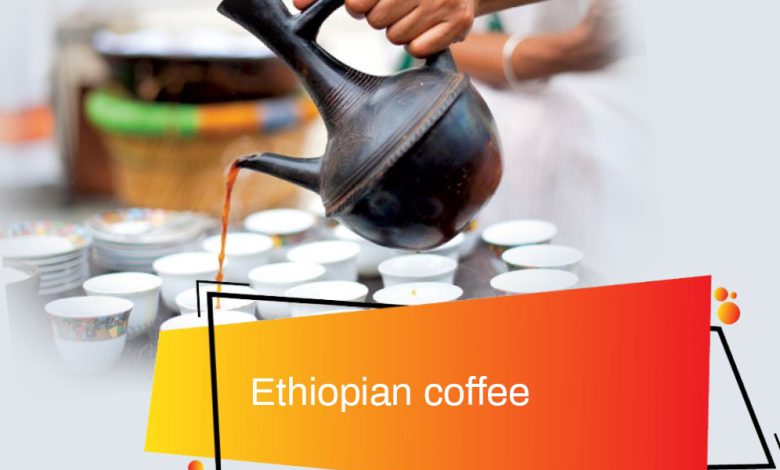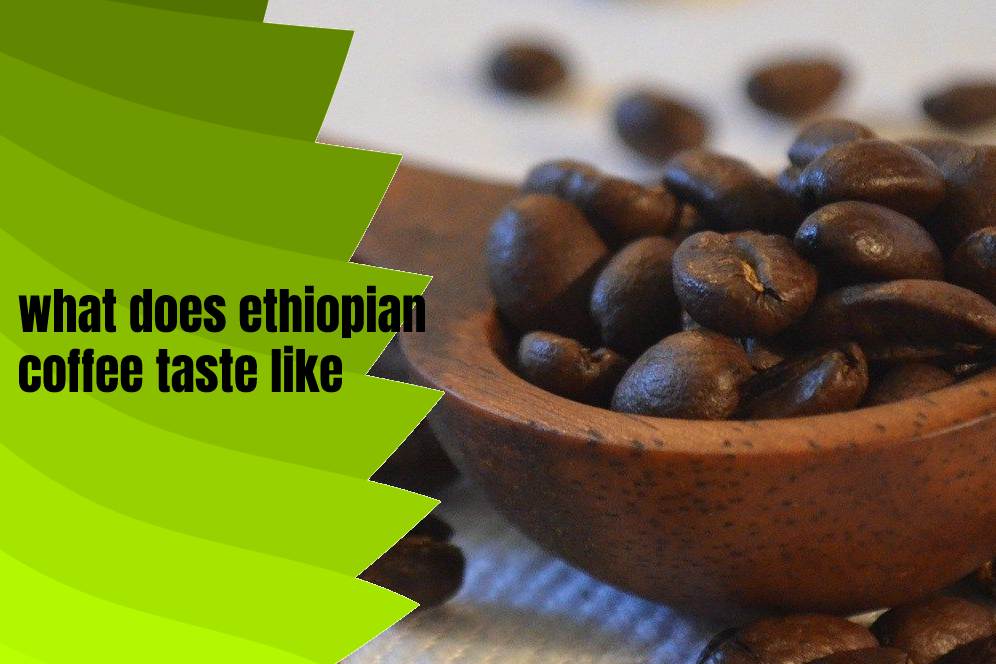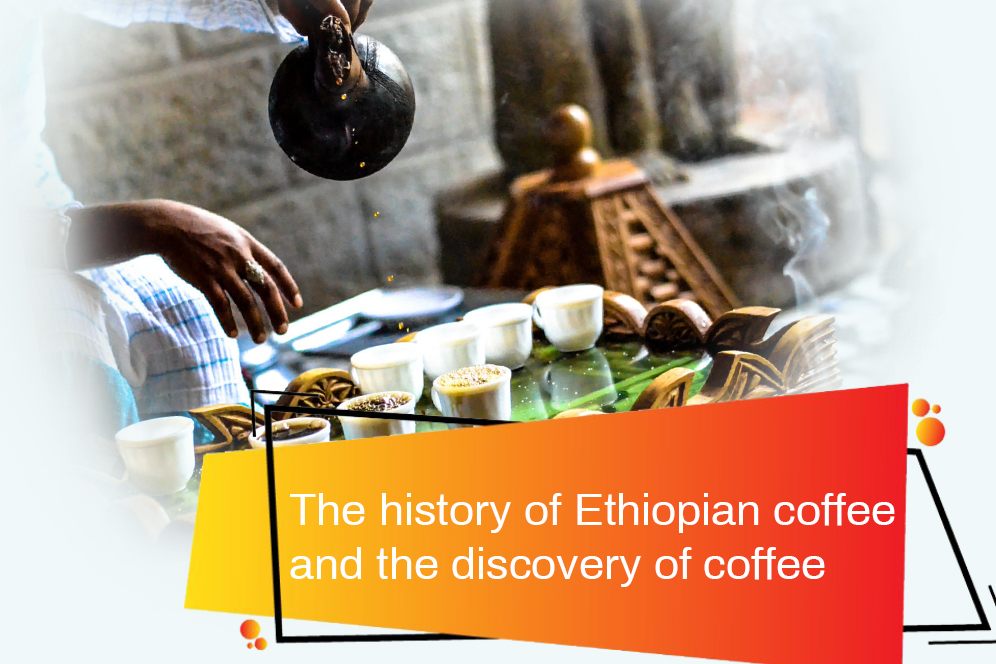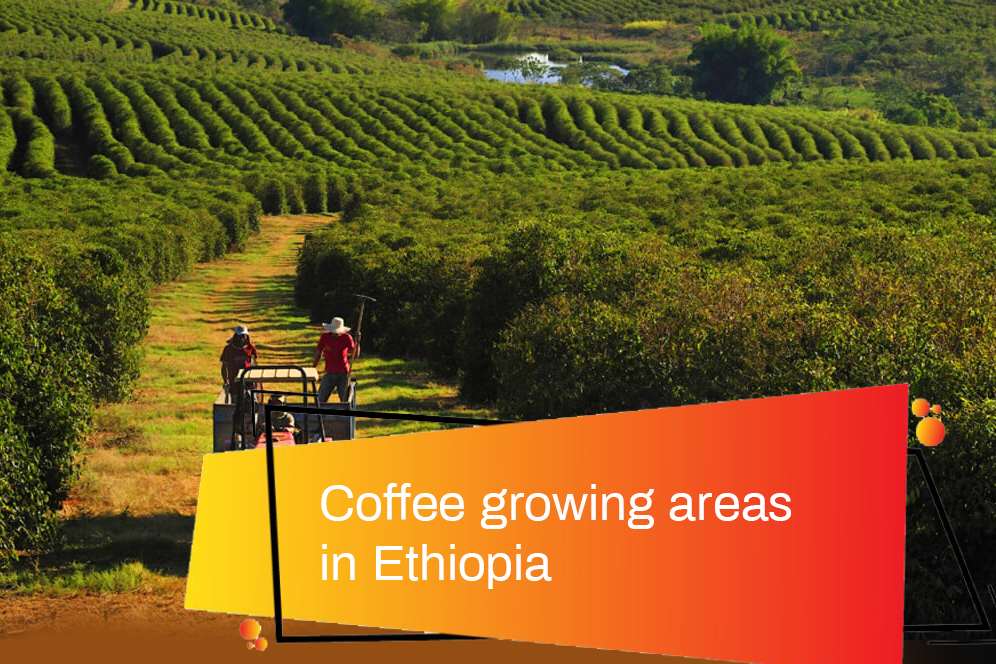Ethiopian Coffee Beans (Types, Taste & How To Brew)

Ethiopia is a country located in East Africa. Its official name is the Federal Democratic Republic of Ethiopia. The capital of this country is Addis Ababa. In the local language, it means a new flower. Some of the best coffee produced in the world comes from here. Ethiopian coffee has 3% of the world coffee market.
The first coffee in the world was actually a type of Arabica coffee that was first born in Ethiopia and currently, some of the best quality coffees in the world are produced in this country.
Contents
- 1 Ethiopian coffee
- 2 The history of Ethiopian coffee and the discovery of coffee
- 3 Coffee growing areas in Ethiopia
- 4 What does Ethiopian coffee taste like?
- 5 How to CultivateEthiopian coffee
- 6 Coffee production methods in Ethiopia
- 7 Ethiopian coffee brewing methods
- 8 Ethiopian coffee benefits
- 9 ethiopian teapot
- 10 ethiopian traditional coffee ceremony steps
Ethiopian coffee
Ethiopian coffee is one of the most delicious and diverse coffees you can try. The aroma and taste of this coffee is unique in the diverse world of coffees. The importance of coffee in Ethiopia is so much that a special ceremony is held for it, this ceremony is considered an important social event and being invited is a sign of friendship and respect.
Like all existing coffee beans, Ethiopian coffee has 5 degrees of roast:
- light
- medium light
- medium
- medium dark
- dark
Ethiopia is the birthplace of the coffee plant and has been there since prehistoric times. Ethiopia is a rich country in history and antiquity in coffee production, a country that is famous for its coffee beans! It is estimated that 15 million Ethiopians, almost a quarter of the country’s population, make a living from growing coffee.
Read more: Turkish Coffee
The history of Ethiopian coffee and the discovery of coffee
At first, Arabica coffee beans were discovered there. It is also called the birthplace of coffee.
Ethiopia is the birthplace of coffee and one of the top producers and consumers of coffee in the world. Around 850 AD, a young shepherd named Kaldi was taking his goats to pasture in the high area, when one day his goats started jumping excitedly after eating red cherries from a nearby bush, Kaldi also decided to taste a few cherries from them, it was interesting that he also felt euphoric and energetic!!!
Kaldi shared his discovery with the monks at a local monastery, and they quickly learned that consuming cherries could help them stay awake during long prayers.
With the passage of time, in order to preserve the aroma and flavor of these seeds for a long time, they were roasted and soaked in hot water, and coffee was born easily, although some people believe that before Kaldi, Sudanese slaves chewed coffee seeds to help them survive the arduous journeys of the slave trade across the desert.
It is interesting to know that the name of a coffee (Kaffa) is taken from the name of the region in the southwest of Ethiopia, where the first coffee beans were discovered.
Read more: Coffee In Colombia
Coffee growing areas in Ethiopia
Sidamo (Yirgashfe):
The coffees of this region are known as one of the best coffees produced in the world. It has a very mild and citrus taste and grows in the southern region. Its aroma is wonderful.
Ghimbi:
The coffees of this region are thermal operations. They are coffee beans that grow in the western region. It is heavier and more balanced in taste.
Harar:
In terms of production, it is one of the oldest coffee beans still produced. Coffees from this region are processed dry. It has medium acidity.
What does Ethiopian coffee taste like?
The most common type of coffee in Ethiopia is mild and aromatic Arabica coffee, which accounts for about 70% of the country’s coffee production. In fact, Ethiopia is considered the origin and initiator of Arabica coffee in the world.
Ethiopian coffee has a fruity aroma that you can taste like fruits, including blueberries, when you drink it. This coffee usually has high acidity. The Ethiopian Sidamo product has relatively low acidity, which indicates the quality of Ethiopian products. Citrus taste and sweet and floral aroma are the characteristics of Sidamo coffee. After drinking it, you feel a chocolate taste in your mouth.
Read more: Catimor Coffee

How to CultivateEthiopian coffee
The high altitudes in the southern mountainous regions of this country have the best conditions for growing coffee, the height of coffee growing in this area is usually between 1500 and 2700 meters, and due to the excellent growing conditions and high altitude of this country, it is the birthplace of some of the best varieties of coffee in all over the world. Most coffees are grown in the shade and among other plants without the use of agricultural chemicals.
Ethiopian seeds are suitable for preparing cold brew or cold coffee due to their fruity and floral taste. To prepare this method, grind the beans well so that the acidity of the coffee does not increase too much.
Coffee production methods in Ethiopia
- Forest coffees.
- Garden coffees.
- Coffees are produced in agricultural lands.
Ethiopian coffee brewing methods
how to brew ethiopian coffee? The produced coffees have a light body and light acidity. Using filter coffee methods for this will be a good decision. The coffee you use should be freshly roasted and ground.
If you want to use washed Ethiopian coffee beans, brewing with a Chemex is ideal. You can get your favorite flavors.
You can opt for V60, which uses a thin paper filter to achieve a syrupy body, bright acidity, and fruity flavors. You can get fruity flavors with ground coffee beans. It also prevents the development of bitter tastes.
Also, if you are interested in fruit and vegetable flavors, you can try Ethiopian coffee with cold brew methods. Pay attention to the thickness of the coffee beans so that your coffee does not produce too much acid.
Read more: Catuai Coffee

Ethiopian coffee benefits
Ethiopian coffee has many antioxidants that prevent many diseases such as Parkinson’s, Alzheimer’s, and improve physical performance and increase energy. One of the reasons for using this type of coffee is its therapeutic properties in medicine, which have been proven by famous doctors.
Coffee is one of the most characteristic antioxidant drinks. Among the properties of coffee, the following can be mentioned:
- Prevention of type 2 diabetes
- Increase energy
- Improve alertness and concentration
- thinness
- liver health
- Prevention of Parkinson’s and Alzheimer’s
- Improve physical performance
- Increased life expectancy
- Prevent stroke
- Cancer prevention
- depression treatment
Read more: Liberica Coffee
ethiopian teapot
Jebena is a traditional Ethiopian and Eritrean coffee pot made of pottery. Locally known as jabana, it is also widely used in Sudan, and the coffee itself is called buna.
The jebena is most commonly used in the traditional coffee ceremony, where women serve coffee to their guests in small clay pots or ceramic pots,[1] alongside an assortment of small snacks such as popcorn, peanuts and the traditional ambasha.
It is usually made of clay and has a neck and pouring spout, and a handle where the neck connects with the base. The jebenas used in Ethiopia commonly have a spout, whereas those utilized in Eritrea usually do not.[3] It is of a medium size, with a neck, a spout and a handle, as well as some regional variants possessing straw lids, and an extra spout to pour the coffee out of, as well as different shaped bases.
ethiopian traditional coffee ceremony steps
Ethiopians have an old tradition called the coffee ceremony, which is called “jebena buna” in the local language. This traditional coffee ceremony is an important part of the life of Ethiopians, and in other words, it is a symbol of livelihood and culture, as well as a symbol of respect and friendship.
The ceremony of drinking coffee, which is considered the most important part of social relations in Ethiopia, lasts about 2 to 3 hours.
Ethiopians have an old tradition called the coffee ceremony, which is called “jebena buna” in the local language. This traditional coffee ceremony is an important part of the life of Ethiopians, and in other words, it is a symbol of livelihood and culture, as well as a symbol of respect and friendship.
The ceremony of drinking coffee, which is considered the most important part of social relations in Ethiopia, lasts about 2 to 3 hours.
It is always held by a young woman or sometimes a housewife. During the ceremony, the host lady wears a traditional white cotton dress up to the ankles. The three stages that are performed in the coffee drinking ceremony in Ethiopia are: roasting, brewing and cupping coffee.
Conclusion
Ethiopia is one of the largest coffee producers in Africa and is the geographic home of Arabica coffee, the most popular bean worldwide.









Does the acidity of Ethiopian coffee depend on its cultivation area?
Yes, the acidity of Ethiopian coffee depends on the region of its cultivation. In general, Ethiopian coffees grown at higher altitudes have more acidity.
In the traditional Ethiopian coffee ceremony, what dish is used to serve coffee?
In the traditional Ethiopian coffee ceremony, a clay pot called jebena is used to serve coffee.
In the stage of roasting coffee beans in the traditional Ethiopian coffee ceremony, what tools are used?
In the stage of roasting coffee beans in the traditional Ethiopian coffee ceremony, a metal pan called metad baret is used.